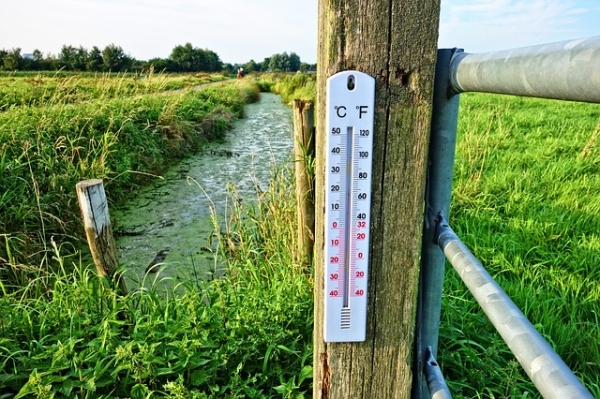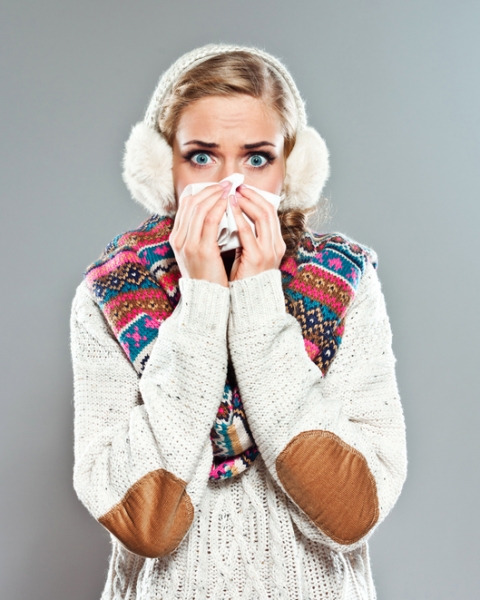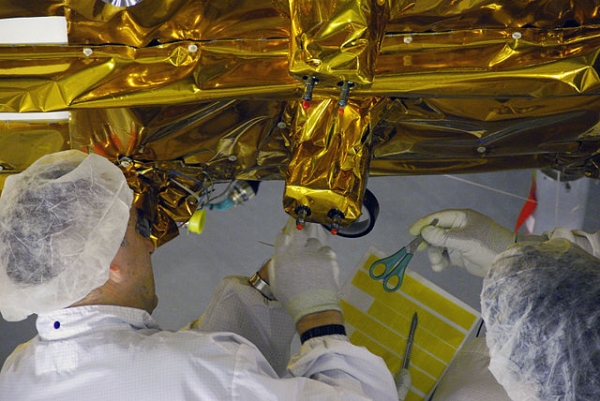Temperature: On Earth and on the Space Station

Hot sunrise in space (BlackJack3D, iStockphoto)

Hot sunrise in space (BlackJack3D, iStockphoto)
How does this align with my curriculum?
This backgrounder explains what temperature is, how it is measured, how it affects people, and how it is controlled on the International Space Station.
Temperature on Earth
We experience temperature every day. We may feel hot, warm, cool or cold. How hot or cold something is its temperature. Temperature is a measurement of the particles that make up all matter.
Temperature is measured using a device called a thermometer. Many thermometers have a red liquid inside a thin tube. The liquid is usually alcohol that has been coloured red. As the temperature rises, the liquid moves up the tube. We read a thermometer by looking at the number line beside the tube.
There are several units of measurement for temperature. In many parts of the world, including Canada, people use the metric unit which is called Celsius. The short form of Celsius is °C. The freezing point of water is 0°C and the boiling point of water is 100°C.
People feel temperature differently. A room may feel warm to one person and cool to another. Sometimes a room may feel too hot or too cold for everyone! When people spend time in a hot place, they begin to feel tired and thirsty. We can begin to feel unwell when our body temperature goes above 40°C. At this temperature people can experience hyperthermia. Hyperthermia can make you feel dizzy, headachy or faint. Hot environments can also affect people’s mental well-being. When people are hot, they can get moody and aggressive. They also may have a hard time concentrating. This can make learning a challenge.
Did you know?
The average normal body temperature is around 37°C.
People also tend to feel uncomfortable in cold environments. When you are cold, your cheeks may turn red. Your nose may get drippy and you may shiver. We begin to feel unwell when our body temperature goes below 35°C. At this temperature, people can experience hypothermia. Hypothermia is the opposite of hyperthermia. Hypothermia can make your legs and arms feel numb. It can also affect your heart rate and breathing.
When we are cold, our immune system also does not work as well. We tend to get more colds and the flu as well as infections in the sinuses and lungs. This explains why so many people get sick in the winter.
So, what is the optimal or ‘best’ range for temperature in a classroom? It depends on the season. In the spring, summer and fall, the optimal temperature for an indoor environment is 24.5°C. A comfortable range is between 23°C and 26°C. In the winter, the optimal temperature for an indoor environment is 22°C. A comfortable range is between 20°C and 23.5°C.
Temperature on the International Space Station
On Earth, temperatures can vary a lot. It can be 50°C and higher in the hottest deserts and it can be -50°C and lower in the Arctic regions. Luckily, Earth’s atmosphere helps to spread the heat around.
The temperature on the sunny side of the International Space Station (ISS) can get as hot as 121°C. The temperature on the shady side can get as as low as -157°C. This is a difference of almost 300°C! People cannot live in temperatures that high or low. This was a challenge for the engineers who designed the space station. How could they keep the space station at a comfortable temperature?
One way that heat is controlled is through the use of insulation. Most of the space station is covered with many thin layers of insulation. The insulation includes layers of shiny materials like Mylar. Mylar is also used to make emergency blankets. The insulation helps to keep heat from leaking out of the cold side of the space station and at the same time keeps the heat of the sunny side from leaking in.
Inside the space station, there are many electronic devices. These devices give off heat. The astronauts themselves also give off heat. To keep the temperature comfortable, a system collects the heat and sends it elsewhere.
First, heat is absorbed by the heat exchangers. The heat exchangers warm up water in pipes. These pipes send the warm water to another set of pipes. The heat then warms up ammonia in the second set of pipes. Ammonia is used because it freezes at a much lower temperature than water.
The warmed-up ammonia is then sent to large radiators on the outside of the space station. The radiators transfer the heat into space. The radiators are the two big sets of light-coloured panels that can be seen on the outside of the space station.
Another important part of controlling the temperature in the space station is the air. The heat exchange system must work with the Environmental Control and Life Support System to make sure that warm air moves through the station. This keeps any areas from getting too cold or too warm. This helps keep all of the equipment working properly.
All of three of these heat control systems keep the temperature in the space station around 24°C. This lets the astronauts work comfortably in t-shirts!
References
Bacal, K. (n.d.) Cabin environment and EVA environment. Federal Aviation Administration.
Boeing Integrated Defense Systems (2006). Active thermal control system (ATCS) overview. NASA.
Canadian Centre for Occupational Health and Safety (CCOHS). (n.d.). Thermal comfort for office work.
Centre canadien d’hygiène et de sécurité au travail (CCHST). (n.d.). Confort thermique au bureau.
Goodman, J., Hurwitz, M., Park, J., and Smith, J. (May, 2018). Heat and learning. National Bureau of Economic Research.
Glenn Research Center. (1998). Living together in space: The design and operations of the life support systems on the international space station, vol. 1. NASA.
Gordon, A.M. (2013). Sour in the sun? 3 unexpected ways weather affects your mood. Psychology Today.
Harmon, K. (2010). How does a heat wave affect the human body? Scientific American.
Ikäheimo, T.M. (2014). The effects of temperature on human health. University of Oulu.



